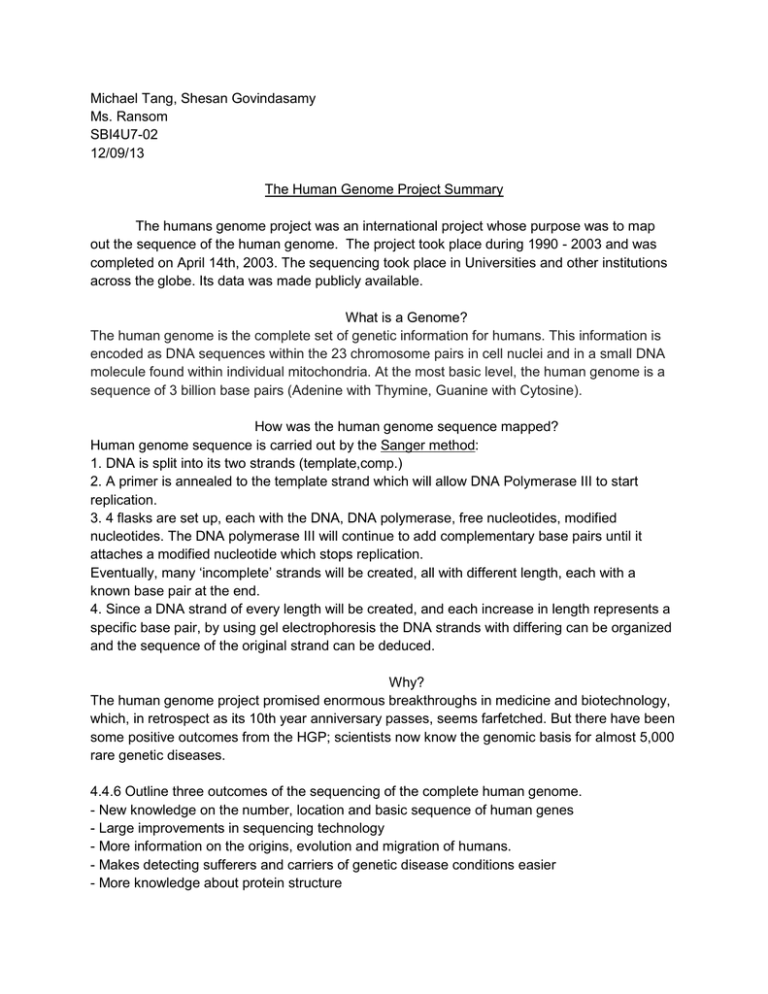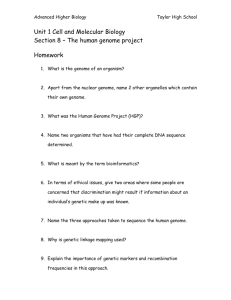Human Genome Project Handout
advertisement

Michael Tang, Shesan Govindasamy Ms. Ransom SBI4U7-02 12/09/13 The Human Genome Project Summary The humans genome project was an international project whose purpose was to map out the sequence of the human genome. The project took place during 1990 - 2003 and was completed on April 14th, 2003. The sequencing took place in Universities and other institutions across the globe. Its data was made publicly available. What is a Genome? The human genome is the complete set of genetic information for humans. This information is encoded as DNA sequences within the 23 chromosome pairs in cell nuclei and in a small DNA molecule found within individual mitochondria. At the most basic level, the human genome is a sequence of 3 billion base pairs (Adenine with Thymine, Guanine with Cytosine). How was the human genome sequence mapped? Human genome sequence is carried out by the Sanger method: 1. DNA is split into its two strands (template,comp.) 2. A primer is annealed to the template strand which will allow DNA Polymerase III to start replication. 3. 4 flasks are set up, each with the DNA, DNA polymerase, free nucleotides, modified nucleotides. The DNA polymerase III will continue to add complementary base pairs until it attaches a modified nucleotide which stops replication. Eventually, many ‘incomplete’ strands will be created, all with different length, each with a known base pair at the end. 4. Since a DNA strand of every length will be created, and each increase in length represents a specific base pair, by using gel electrophoresis the DNA strands with differing can be organized and the sequence of the original strand can be deduced. Why? The human genome project promised enormous breakthroughs in medicine and biotechnology, which, in retrospect as its 10th year anniversary passes, seems farfetched. But there have been some positive outcomes from the HGP; scientists now know the genomic basis for almost 5,000 rare genetic diseases. 4.4.6 Outline three outcomes of the sequencing of the complete human genome. - New knowledge on the number, location and basic sequence of human genes - Large improvements in sequencing technology - More information on the origins, evolution and migration of humans. - Makes detecting sufferers and carriers of genetic disease conditions easier - More knowledge about protein structure








